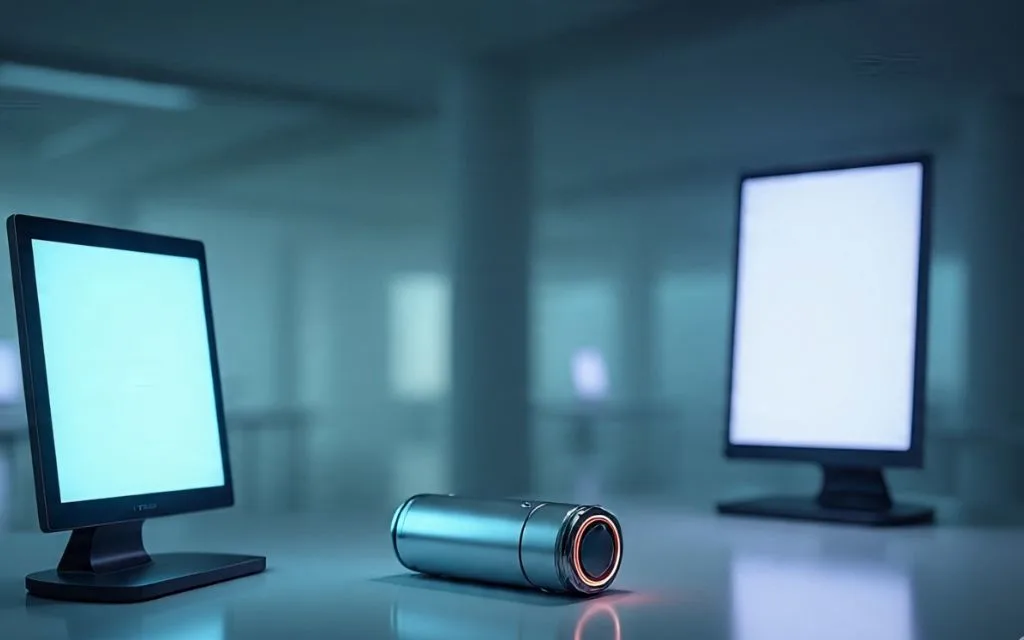In our fast-moving and noisy world, the demand for quiet technologies is rapidly growing. From silent electric cars to noise-canceling devices and soundproof appliances, quiet technologies are changing the way we live, work, and interact with our surroundings. People are beginning to realize the health and lifestyle benefits of reducing noise pollution. That is why industries around the world are now focusing on creating quiet technologie that can make life more peaceful and productive.
This detailed guide will explore what quiet technologie are, why they matter, and how they are becoming part of our everyday life. We will also look at the latest innovations in quiet technologies and how they contribute to a healthier and calmer world.
What Are Quiet Technologies
Quiet technologies are innovative tools, devices, and systems specifically designed to reduce noise while maintaining high performance. These technologies are part of a global movement to minimize sound pollution in homes, workplaces, transportation, and public spaces. In simple terms, quiet technologies allow people to enjoy modern conveniences without the unwanted noise that usually comes with them.
As technology has advanced, engineers and designers have focused on ways to make products more efficient and less noisy. For example, the engines in electric vehicles run quietly compared to gasoline-powered engines. Home appliances like silent refrigerators, low-noise washing machines, and quiet air purifiers are now popular because they create a calmer living environment. In offices, noise-free printers and silent keyboards are improving focus and reducing distractions.
The purpose of quiet technologies goes beyond personal comfort. They also contribute to public health by reducing stress, anxiety, and other health risks related to constant noise exposure. Modern life is filled with background noise from traffic, industrial machinery, and household gadgets. By adopting quiet technologies, societies can create healthier and more peaceful environments.
Additionally, quiet technologies are closely linked to sustainability. Many silent innovations are energy-efficient, producing less mechanical friction and heat, which reduces power consumption. This is why companies in various industries are now prioritizing the development of low-noise solutions as part of their environmental responsibility efforts.
Examples of Quiet Technologies
There are many different examples of quiet technologie in today’s world. These innovations are making life quieter and more comfortable in homes, cities, hospitals, and workplaces. Let us explore some of the most common types of quiet technologies available right now.
Electric Vehicles
One of the most well-known examples of quiet technologies is the electric vehicle. Unlike gasoline or diesel cars, electric cars operate without loud engine sounds. This has made city streets quieter and reduced stress for drivers and pedestrians alike. Many governments are supporting the shift to electric transportation because of the combined benefits of reducing both air and noise pollution.
Silent Home Appliances
In modern homes, people now prefer quiet technologie for daily use. Silent washing machines, low-noise blenders, quiet dishwashers, and whisper-quiet fans help maintain a peaceful environment. These appliances allow families to continue their daily routines without disturbing each other, especially in smaller living spaces or open-plan homes.
Noise-Cancelling Headphones
Noise-cancelling headphones are a popular personal example of quiet technologie. They use advanced microphones and sound wave technology to cancel out background noise. This allows users to enjoy music, focus on work, or relax without being disturbed by external sounds.
Low-Noise Office Equipment
Modern offices rely on quiet technologies to create productive workspaces. Silent printers, low-noise shredders, and quiet keyboards help reduce distractions. This creates a calm atmosphere where employees can concentrate better and experience less fatigue during long working hours.
Soundproof Building Materials
Quiet technologie are also present in architecture and construction. Soundproof windows, noise-absorbing walls, and quiet ventilation systems help reduce noise from outside traffic or nearby activities. These innovations are now a standard part of building designs for homes, offices, and hotels.
These examples show that quiet technologie are not just limited to high-tech gadgets. They are part of a broad shift toward sound management and noise reduction solutions in many areas of life.

Why Quiet Technologies Matter in Modern Society
The rise of quiet technologies is not just about convenience or comfort. It is about improving quality of life, supporting health, and promoting sustainability. As cities grow and lifestyles become busier, the need for peaceful environments is more important than ever.
The Problem of Noise Pollution
Noise pollution is one of the least discussed but most harmful forms of pollution. It is everywhere in modern life. Cars, trucks, construction equipment, and even household appliances produce constant sound. Over time, this can cause serious health problems such as high blood pressure, hearing loss, sleep disorders, and increased stress.
The World Health Organization has identified noise pollution as a major environmental threat. That is why quiet technologies are essential in reducing everyday exposure to harmful noise levels.
Better Mental and Physical Health
Using quiet technologie can help people maintain better mental health. Quiet spaces reduce anxiety and promote relaxation. At the same time, less noise means better sleep, which is critical for physical health. Families, workers, and students all benefit from living and working in quieter environments.
Improved Productivity and Focus
Workplaces and schools are adopting quiet technologies to improve focus and productivity. When employees are not distracted by noisy printers or loud HVAC systems, they can concentrate better. Students can learn more effectively in classrooms with sound-absorbing materials and low-noise equipment.
A Sustainable Future
Many quiet technologies are also environmentally friendly. For example, electric vehicles not only reduce noise but also help cut down on pollution. This makes cities cleaner and healthier while supporting global efforts to fight climate change.
In summary, quiet technologies play a key role in creating a healthier, more sustainable, and more comfortable world.
Reducing Noise Pollution
One of the primary goals of quiet technologies is to reduce noise pollution. Noise pollution refers to the harmful or annoying sounds that come from everyday sources like traffic, factories, and even home appliances. It is a growing problem in urban areas, affecting millions of people worldwide.
Sources of Noise Pollution
The main sources of noise pollution include:
- Traffic noise from cars, motorcycles, and trucks
- Construction noise from heavy machinery and tools
- Industrial noise from factories and production plants
- Household noise from appliances, televisions, and personal devices
Each of these contributes to a noisier environment, which can lead to negative health effects over time.
How Quiet Technologies Help
Quiet technologies help reduce this noise by providing low-noise alternatives to everyday products. For example, electric buses are much quieter than traditional diesel buses. In homes, silent kitchen appliances allow people to cook and clean without the loud noises of older machines. In factories, low-noise industrial equipment helps create safer and more comfortable working conditions.
Cities are also adopting quiet technologies in public infrastructure. Sound-absorbing road surfaces, quiet construction machinery, and silent trams are now common in many modern urban areas. These innovations reduce noise at the source, preventing it from becoming a problem in the first place.
Benefits of Reducing Noise Pollution
Reducing noise pollution has many benefits. It improves the quality of life for city residents, protects wildlife from harmful sounds, and helps create a calmer and more enjoyable environment. In healthcare, quieter hospitals lead to faster patient recovery. In education, quiet technologies create better learning spaces for students.
By focusing on quiet technologies, society can take meaningful steps toward solving the problem of noise pollution and building a healthier future for all.
The Technology Behind Quiet Innovations
Developing quiet technologies requires advanced engineering and design. Companies use sound-dampening materials, vibration reduction systems, and aerodynamic designs to minimize noise. Digital control systems are also used to monitor and adjust operations silently.
For example, electric motors are replacing traditional combustion engines because they are naturally quieter. In consumer electronics, solid-state drives are now preferred over hard disk drives because they operate without mechanical noise.
Innovators are also focusing on active noise control. This technique uses microphones and speakers to cancel out unwanted sounds. It is the technology behind noise-cancelling headphones and is being adapted for use in cars, homes, and offices.
Benefits of Quiet Technologies
The benefits of quiet technologies are wide-ranging. Here are some of the most important advantages:
Health and Wellbeing
Noise is a hidden health risk. Quiet technologies help reduce this risk by creating calm environments. This leads to better sleep, lower stress levels, and improved mental health.
Energy Efficiency
Many quiet technologies are also more energy-efficient. For example, electric vehicles not only reduce noise but also cut down on fuel consumption. Silent cooling systems often use less power compared to older, noisy models.
Better Productivity
In offices and educational spaces, quiet technologies help people concentrate. This leads to higher productivity and better learning outcomes.
Environmental Impact
By reducing noise pollution, quiet technologies protect wildlife and natural ecosystems. Many animals depend on sound for communication, so quieter cities and vehicles help preserve biodiversity.
Challenges in Adopting Quiet Technologies
While quiet technologies offer many benefits, there are also challenges. Some silent innovations are still expensive, making them less accessible to everyone. Developing low-noise machines often requires new materials and designs, which can increase production costs.
There is also a learning curve for manufacturers. Building quiet technologies requires specialized knowledge, which not all companies have yet. However, as demand grows, more businesses are investing in research and development to meet consumer needs.
The Future of Quiet Technologies
The future of quiet technologies is promising. As awareness of noise pollution grows, more industries will adopt silent solutions. Experts predict that quiet technologies will become standard in homes, offices, hospitals, and cities.
Smart Homes and Quiet Living
Smart homes are already using quiet technologies to improve daily life. Automated blinds, silent vacuum cleaners, and low-noise security systems are examples of how the modern home is evolving. In the future, houses will be designed with soundproofing and quiet systems built in from the start.
Quiet Cities and Urban Planning
Urban planners are looking at quiet technologies to create more livable cities. This includes noise-reducing pavement, silent public transport, and sound-absorbing buildings. These innovations will lead to healthier and happier urban populations.
Technological Innovations on the Horizon
Researchers are working on new quiet technologies that could change industries forever. For example, drone delivery systems are being designed to fly silently, and factories are testing low-noise manufacturing equipment. These breakthroughs will help make the world a quieter and more peaceful place.
Conclusion
In conclusion, quiet technologies are transforming the way we live and work. From silent home appliances to low-noise transportation, these innovations are improving health, productivity, and quality of life. As technology advances, the role of quiet technologies will continue to grow.
Businesses, governments, and individuals must embrace quiet technologies to reduce noise pollution and create a more peaceful world. With new developments on the horizon, the future looks bright for this important field. Investing in quiet technologies is not just a trend; it is a necessary step toward a healthier and more sustainable society.






